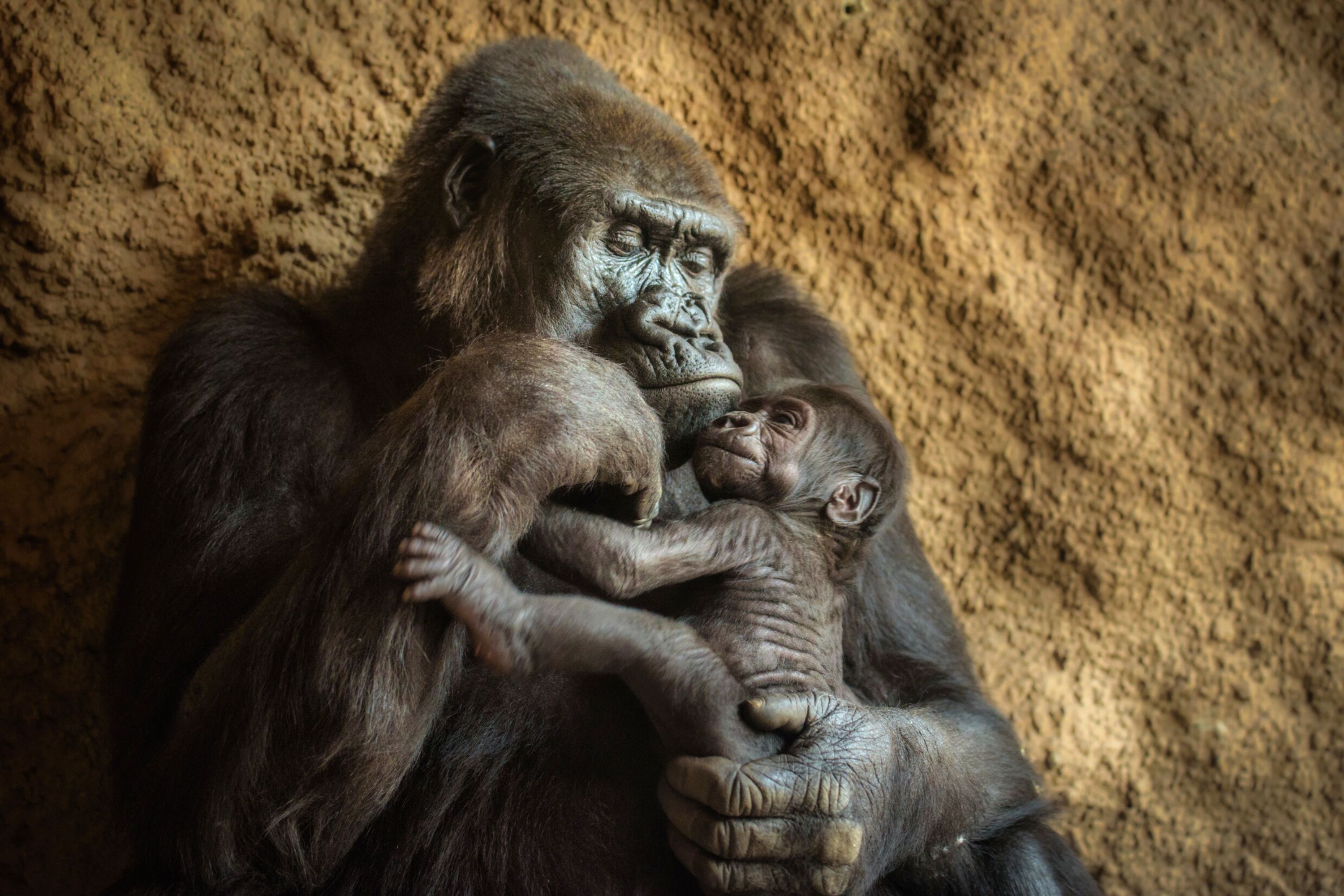A Western Lowland Gorilla Baby Was Born At The Columbus Zoo, Marking A Significant Milestone For The Critically Endangered Species

On July 3, 2024, the Columbus Zoo announced the news of the birth of a baby western lowland gorilla to first-time mom Sue and dad Ktembe. The baby was born in late June. The zoo also shared three heartwarming photos of the precious newborn.
In the first photo, Sue is looking at the camera while cradling her baby in her arms. The baby is staring adoringly at its mother.
It is not yet known what the gender of the baby is, as the staff members are trying to keep a respectful distance to let the newest addition to the family acclimate to the environment.
“Sue is being an amazing mom, cuddling and caring for her newborn with lots of love. To give them some privacy and bonding time, we’ll find out if the baby is a boy or a girl a little later,” wrote the zoo in the post.
Starting on July 8, visitors will be allowed to meet the baby gorilla during certain hours of the day. They are limiting visits to ensure that the family continues to bond properly. The other two photos were close-ups of the newborn.
This baby is the 35th gorilla to be born at Columbus Zoo. Its birth is significant for the future of the western lowland gorilla species because they are listed as critically endangered on the International Union for Conservation of Nature’s (IUCN) Red List of Threatened Species.
Western lowland gorillas are distributed across the Congo Basin and the countries of Angola, Cameroon, Central Africa Republic, Gabon, Equatorial Guinea, and Congo. They are likely now extinct in the Democratic Republic of Congo.
“The country of Gabon lost over half its gorilla population between 1983 and 2000. More recent population declines have been estimated using a predictive model that incorporated survey data collected between 2003 and 2013 across the entire range of Western Lowland gorillas,” explained the IUCN.
The model found that between 2005 and 2013, there was a 19.4 percent decline, which corresponded to an annual loss of approximately 2.7 percent.
Nick Fox – stock.adobe.com – illustrative purposes only, not the actual gorillas
Sign up for Chip Chick’s newsletter and get stories like this delivered to your inbox.
A 2018 study estimated that over 360,000 gorillas still occupy the forests of Western Equatorial Africa, but 80 percent of those gorillas inhabit unprotected areas.
Hunting, habitat loss, and disease outbreaks have caused western lowland gorilla numbers to drop. They have also contributed to a 60 percent decline in populations in the past 20 to 25 years.
Over the last 15 years, about one-third of the total population found in protected habitats has been affected by the Ebola virus.
In the wild, gorillas can live for 30 to 40 years. Under the care of humans, they can live into their 50s. In 1956, the first gorilla to be born in professional care was named Colo.
She lived to be a record-breaking 60-year-old, the oldest gorilla in a zoo at that time. She passed away in 2017, but her legacy lives on, helping to protect the future of the species.
You can see the photos of the Columbus Zoo’s new baby here.
Welcome to Billionaire Club Co LLC, your gateway to a brand-new social media experience! Sign up today and dive into over 10,000 fresh daily articles and videos curated just for your enjoyment. Enjoy the ad free experience, unlimited content interactions, and get that coveted blue check verification—all for just $1 a month!
Account Frozen
Your account is frozen. You can still view content but cannot interact with it.
Please go to your settings to update your account status.
Open Profile Settings